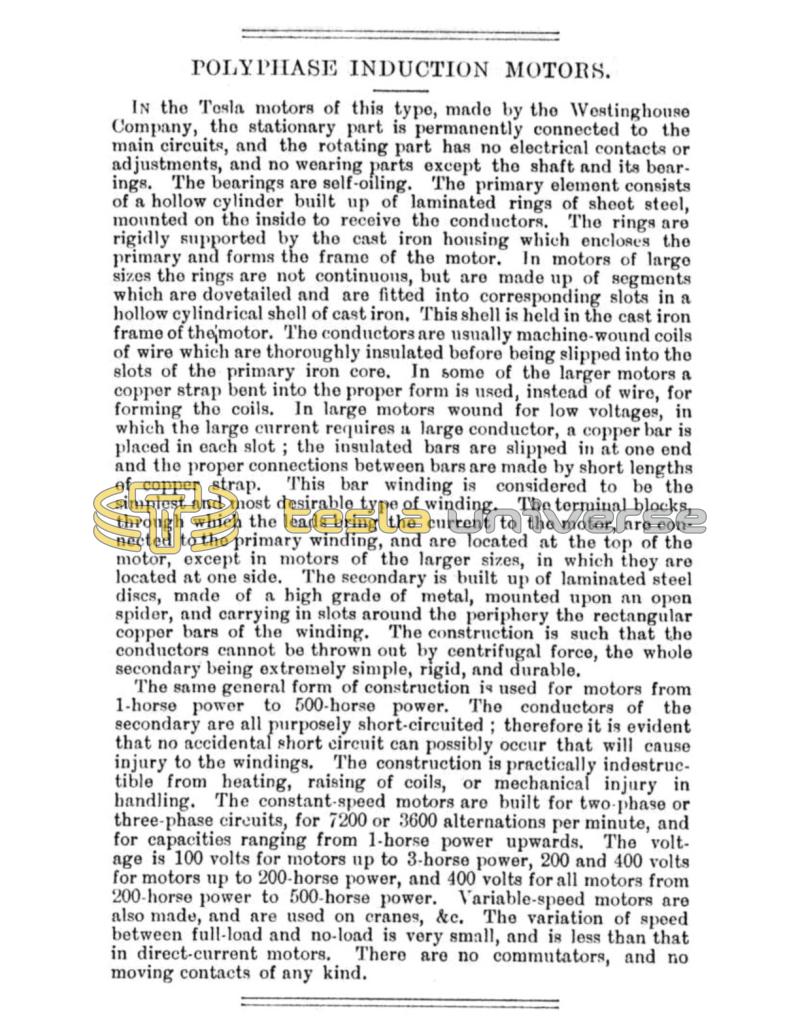
Nikola Tesla Articles
Polyphase Induction Motors
In the Tesla motors of this type, made by the Westinghouse Company, the stationary part is permanently connected to the main circuits, and the rotating part has no electrical contacts or adjustments, and no wearing parts except the shaft and its bearings. The bearings are self-oiling. The primary element consists of a hollow cylinder built up of laminated rings of sheet steel, mounted on the inside to receive the conductors. The rings are rigidly supported by the cast iron housing which encloses the primary and forms the frame of the motor. In motors of large sizes the rings are not continuous, but are made up of segments which are dovetailed and are fitted into corresponding slots in a hollow cylindrical shell of cast iron. This shell is held in the cast iron frame of the motor. The conductors are usually machine-wound coils of wire which are thoroughly insulated before being slipped into the slots of the primary iron core. In some of the larger motors a copper strap bent into the proper form is used, instead of wire, for forming the coils. In large motors wound for low voltages, in which the large current requires a large conductor, a copper bar is placed in each slot; the insulated bars are slipped in at one end and the proper connections between bars are made by short lengths of copper strap. This bar winding is considered to be the simplest and most desirable type of winding. The terminal blocks, through which the leads bring the current to the motor, are connected to the primary winding, and are located at the top of the motor, except in motors of the larger sizes, in which they are located at one side. The secondary is built up of laminated steel discs, made of a high grade of metal, mounted upon an open spider, and carrying in slots around the periphery the rectangular copper bars of the winding. The construction is such that the conductors cannot be thrown out by centrifugal force, the whole secondary being extremely simple, rigid, and durable.
The same general form of construction is used for motors from 1-horse power to 500-horse power. The conductors of the secondary are all purposely short-circuited ; therefore it is evident that no accidental short circuit can possibly occur that will cause injury to the windings. The construction is practically indestructible from heating, raising of coils, or mechanical injury in handling. The constant-speed motors are built for two phase or three-phase circuits, for 7200 or 3600 alternations per minute, and for capacities ranging from 1-horse power upwards. The voltage is 100 volts for motors up to 3-horse power, 200 and 400 volts for motors up to 200-horse power, and 400 volts for all motors from 200-horse power to 500-horse power. Variable-speed motors are also made, and are used on cranes, &c. The variation of speed between full-load and no-load is very small, and is less than that in direct-current motors. There are no commutators, and no moving contacts of any kind.
